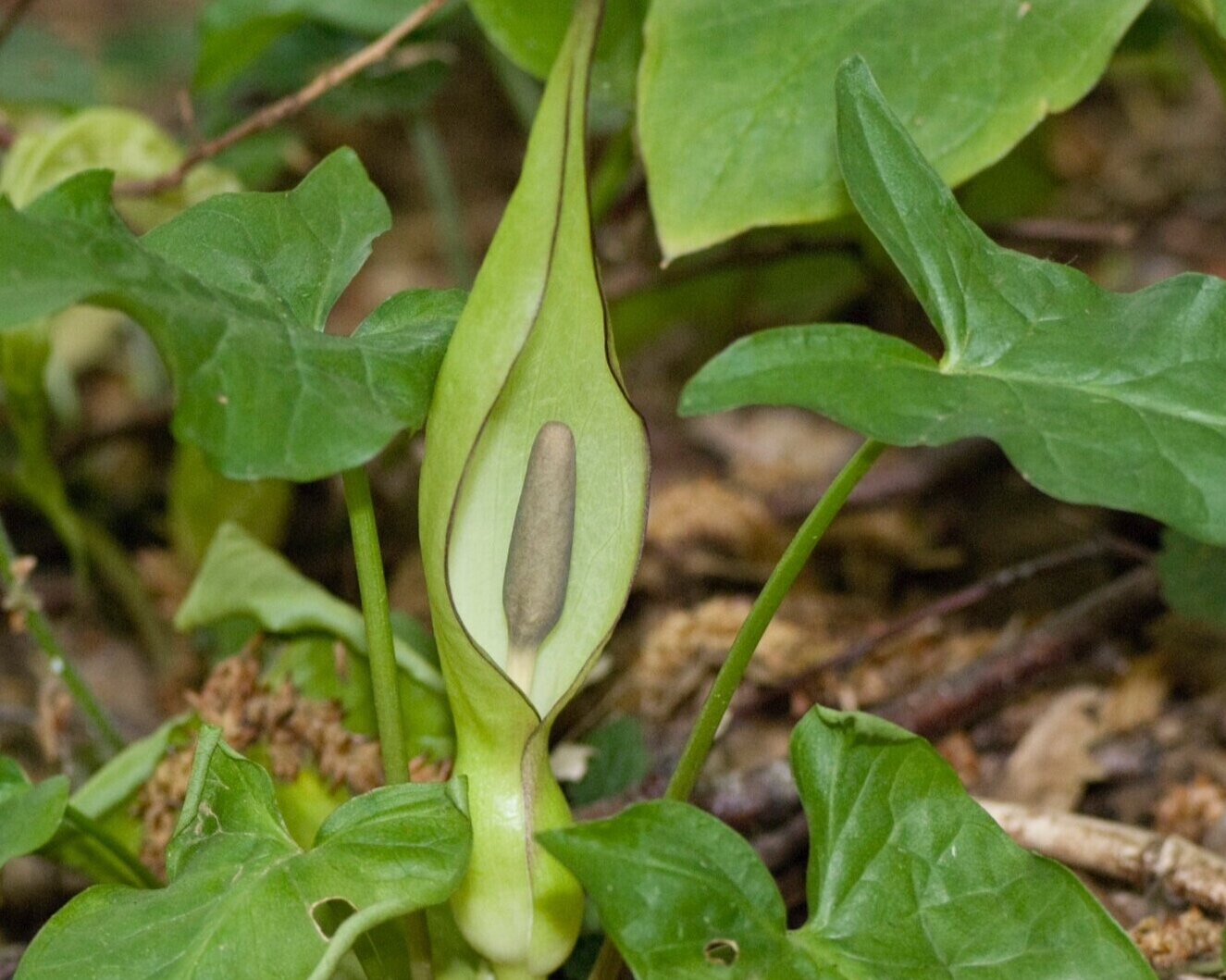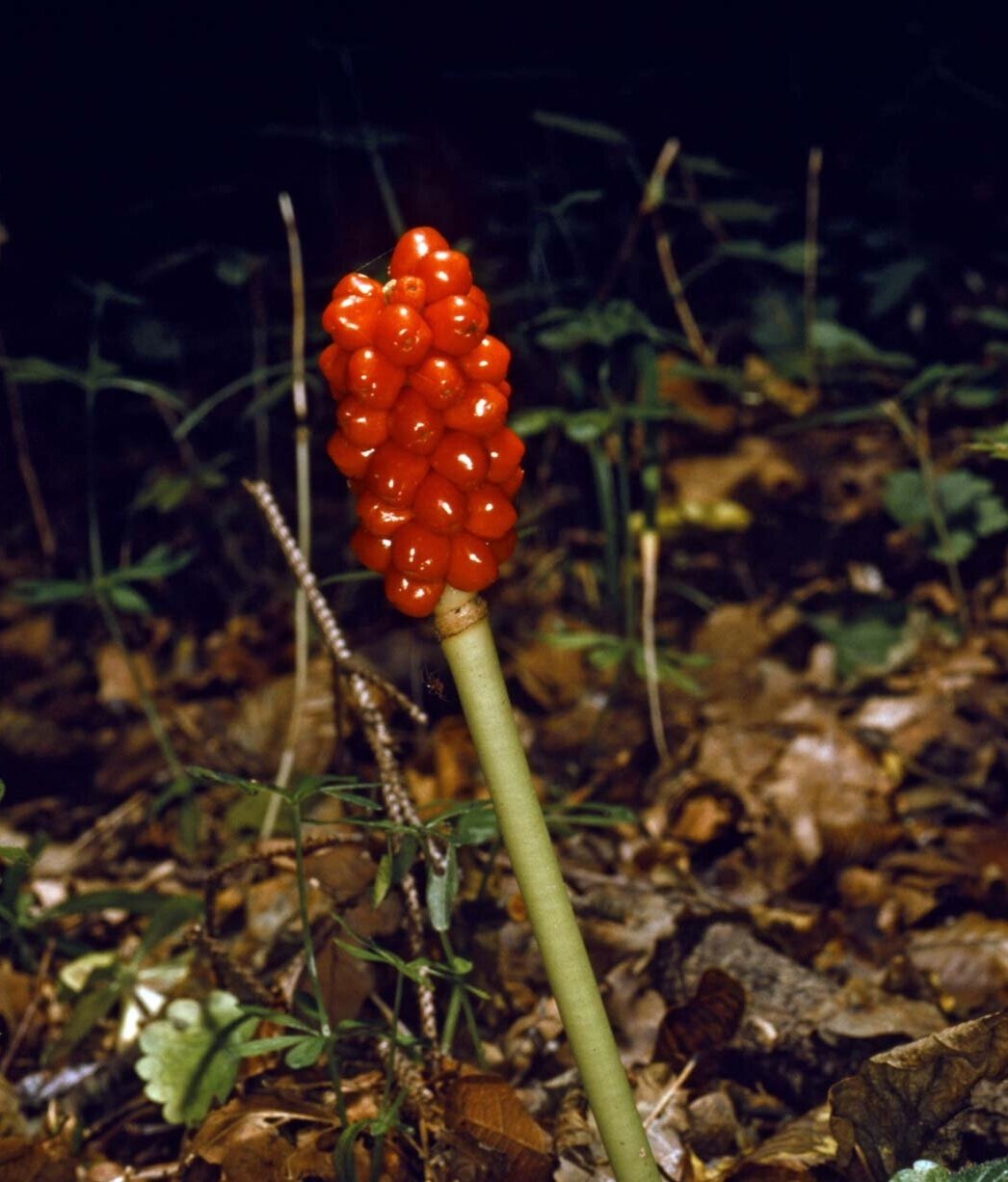Garden foe - Arum Maculatum
It is everywhere, or at least so it seems in my garden. I believe some gardeners plant it as ground cover for shady places but I am finding it cropping up all over the place uninvited, as well as in the hedgerows, the verges, the fields… In my book it is definitely a weed.
So what is Arum Maculatum? To give it one of its common names, that I have known since I was a child, it is cuckoo pint. What I didn’t know back then is that “pint” was introduced in the 1550’s as a shortened euphemism for the word “pintle”, which was another name for a penis. Looking at the flower and fruit of Arum Maculatum soon explains why, and the long list of common names at the end of this post shows many of them with a similar thought in mind. The term “maculatum” means spotted, and in some cases the leaves have dark blotches, many however are plain green and strictly speaking are Arum Immaculatum. There is also another variant, Arum Italicum, which has white veined markings, but all are effectively the same plant.
They are a compact, tuberous perennials which as seedlings have small light green leaves that are not glossy. At about 5 months the leaves grow larger and glossier. At one year old all of the arrow-shaped green leaves have become glossy and grow to about 45cm. The next year the plant flowers during summer, with variable pale green to purple flushed flowering spathes that appear in late spring, followed by spikes bearing orange-red berries in the autumn. Foliage dies down by midsummer.
So far so good, but there are definite downsides - they are very invasive and they are poisonous. They self seed readily and any small fragments of tuber, which can be as deep as 40cm in the soil, will readily re-sprout and can also be spread around the garden in soil and compost. Once in the borders amongst prize plants they are very difficult to get rid of entirely. This is what the RHS recommends:
Digging up tuberous rhizomes regularly can help to limit spread of the weed but is time consuming and unlikely to eradicate it completely, as any missed fragments will regenerate. Ensure all weed material is destroyed and not added to compost bins
Laying opaque mulches can help to smother weed growth. These should be in place for at least two growing seasons. Where other plants are growing try a deep (15cm/6in) bark mulch instead
There is little recorded data on the chemical susceptibility of this weed but success might be had by applying SBK Brushwood Killer in spring when there is an abundance of leafy growth.
A systemic glyphosate-based herbicide would also likely be effective, but several applications may be needed. To improve the uptake of glyphosate, bruise weed foliage with the back of a spade or by treading before treatment.
All parts of the plant are poisonous and the red to orange berries are extremely so. They contain oxalates of saponins which have needle-shaped crystals that irritate the skin, mouth, tongue, and throat, and result in swelling of the throat, difficulty breathing, burning pain, and upset stomach. However, their acrid taste, coupled with the almost immediate tingling sensation in the mouth when consumed, means that large amounts are rarely taken and serious harm is avoided. Nevertheless Arum Maculate is a very common causes of accidental plant poisoning and apparently the most common upset is if somebody uses the leaves as woodland toilet paper, a mistake they will only make once!
So there we have it. One to welcome into your garden at your peril - Arum Maculatum aka snakeshead, adder's root, arum, wild arum, arum lily, lords-and-ladies, devils and angels, cows and bulls, cuckoo-pint, soldiers diddies, priest's pintle, Adam and Eve, bobbins, naked girls, naked boys, starch-root, wake robin, friar's cowl, sonsie-give-us-your-hand, jack in the pulpit, cheese and toast, Aaron, adder's meat, bloody man's finger, bobbin' Joan, bobbing Jane, boys and girls, cocky baby, English passion flower, brown dragons and Kitty-come-down-the-lane.


